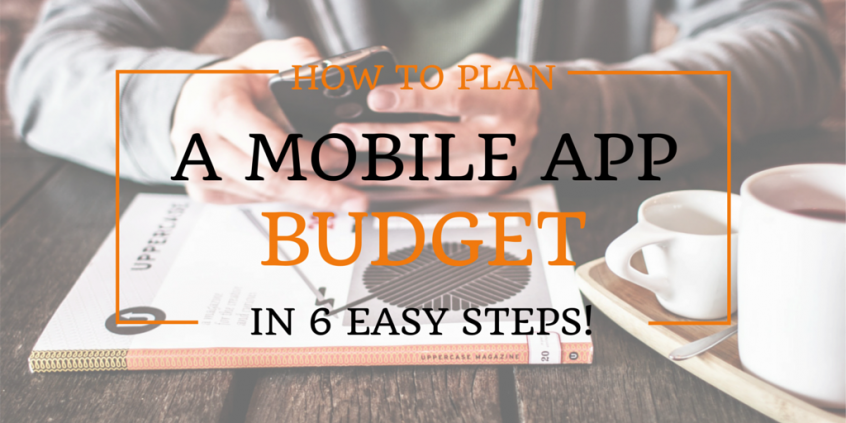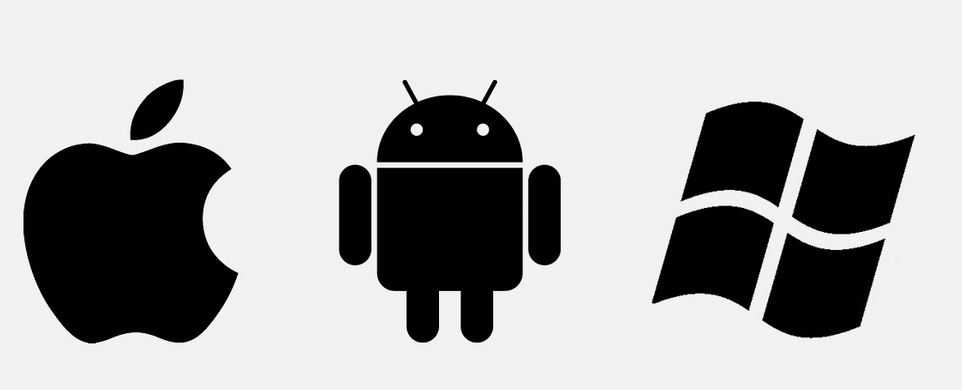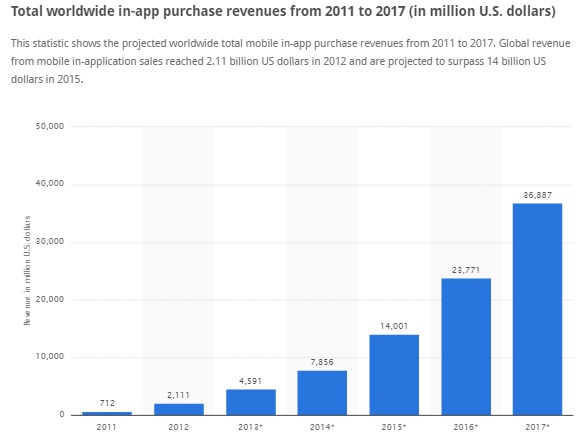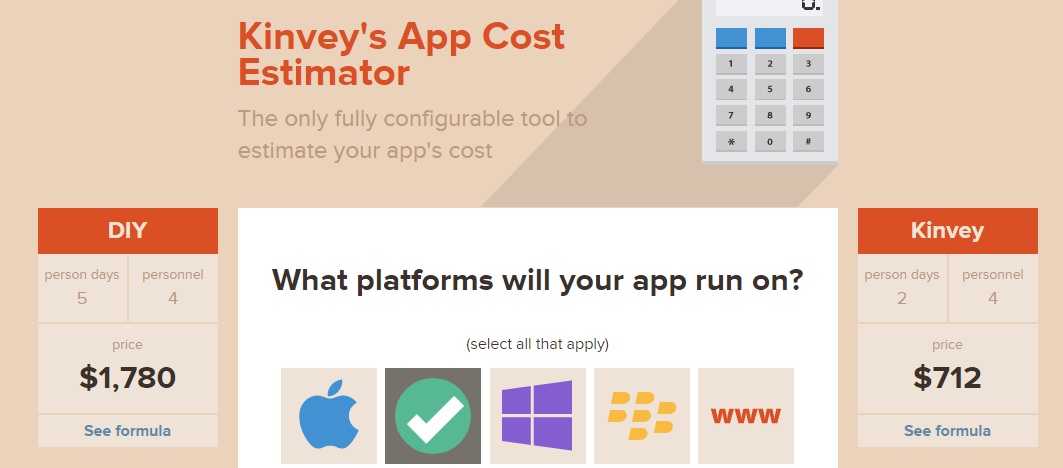Creating a budget for a mobile app is a tall order, especially since it requires a thorough overview and consideration of each and every aspect that involves money. This ranges from product development to monetization of the app.
Though this is nothing short of creating a business plan (that runs into numerous pages), we are making an attempt to break down the most crucial steps in creating an apt budget for your mobile app.
Step 1 – Need Analysis
Before you even consider creating a budget it is more vital to identify the need for creating a mobile app. To address this let’s look at the following scenarios>
1) You want to create an app as an extension of your brand identity by providing a mobile friendly experience to your customers. For example web based e-commerce brands like Asos, etc.
2) You are an app developer who has sighted a unique opportunity and want to create a mobile app around it. For example, the Lyft App.
3) Your competitors are already getting on the mobile app bandwagon, and you wouldn’t want to sabotage this opportunity. For example Taco Bell app.
4) You wish to provide an engagement platform to your customers that are closely related to your product. For example Nike’s Runkeeper App.
Identifying a clear objective would help you to gauge and make the most of your mobile app budget.
Step 2- Clear Platform Dilemma
Once you have identified the need for the product it’s also important to ascertain the right platform for the app. This simply means whether you would want to create an app for iOS, Android or Windows or a one that is suited to one or more platforms. This decision should be research oriented since it is going to influence your budget directly.
Image Source: https://prismetric.wordpress.com/category/android-app-development/
Each platform will have a different set of expenses attached to its development, and hence it is crucial for developers to analyse this aspect way early. Android apps are believed to cost a tad more than the iOS due to the various operating system versions and range of devices that it needs to be optimised for.
Step 3- Decide, In-Built Or Outsourced
While building an app is a brilliant idea, one must be clear about its development. In other words, one needs to be clear whether the app is going to be outsourced or would be developed in –house. Many businesses may not have the option of the latter and may, therefore, opt for outsourcing this to a third party.
This means additional investments since the agency (or individual/s) would be paid in accordance with the work they do (coding, designing etc.). While developing an app in-house, isn’t difficult, one usually seeks a high-quality product that in turn can be obtained only when the product is developed by an experienced professional or agency. However, care should be taken before hiring developers because this cost is on a rise.
There’s always a medial way to cut cost though. Firstly, aim at developing an MVP (Minimum Viable Product) and improve it as and how your user base increases. Another option is to complete the project with the bare minimum resources that are available and then approach a development agency. This tactic will considerably minimise your expenses.
Step 4- Evaluate Functionality
Once you have identified the points mentioned above, it is important to evaluate the level of functionality that you wish to provide your users through the app. This is crucial since functionality is directly proportional to expenses. Here’s an example
Most apps that offer higher functionality (due to heavy coding) tend to get expensive. This includes gaming apps that provide various levels to users, or apps that have multiple sharing interfaces.
A few other parameters that one should consider under the functionality tab are listed below >
· In –app purchasing
· Social media integration
· App launch cost
· Server backup and other costs
Apart from the factors as mentioned above, introduction of new technology or building highly customised app for users would also increase your budget.
To add features and functionality at a lower cost one should consider using existent SDK and thereby reduce this cost significantly. A few of them are listed below>
· Parse– For push notification, cloud storage and social.
· Socialize– Social platforms
· Twilio– Voice, SMS and MMS messaging
· Mixpanel– Analytics
· Cometchat or Konotor– For In-app chat
. AppVirality – For In-app Referrals
Step 5- Submission Of App
Once the app is developed, the next step is to submit it on the stores of choice. The monetary aspect of it would differ for each store (play/app/windows store). For example submitting an app on iTunes is around $99 as compared to Android apps that is costed at $25 (one- time fee).
The cost of doing so on Windows is much cheaper than the others and is charged at around $12. The Windows platform also lets the developers to use either an individual account or a company account to do. Both these options come with their own benefits.
It’s important to be aware of the latest change in policies and be well-versed with the terms and conditions of the platform on which you plan to submit your app.
The process of submission is most rigid on Apple Store.This article lists various reasons that can lead to your app being rejected on App Store and how you can prevent the same.
Step 6- App Marketing
Once the app is built, it is crucial that it is marketed well. Marketing the app however should have a tasteful budget allocated to it, because a lot depends on it. Though there are a lot of do’s and don’t that one need to remember, a good app will scale well if it has made the right impact on tech blogs, social media and, of course, the press. Though all this may sound daunting, this article by Smashing Magazine has got it sorted for you.
A good read of the above article would let you analyse the costs that are involved with PR, and other form of marketing and these would definitely vary from one country to another.
Once you have examined the above-mentioned parameters, it’s time to monetize the app. Earning from your app, complete the budgeting cycle and will provide you an excellent overview of your ROI.
There are various ways to do so and are listed below >
-
Paid Premium Features– A lot of gaming apps and utility apps have been using this method to monetize their app. This method involves offering a product at a free cost however the user has to pay a fee to unlock premium features. Another variant to this method is a paid app with paid features, which however, is not very popular.
-
One Time Payment– Just like signature credit cards, this process aims at collecting a fixed fee from users as a one-time payment. The only drawback with this method is a full stop to revenue once a customer has installed the app. It also means that the developers have to be on a constant look-out for more users.
-
In-app purchases– This has been the most common method and accounts for over 14 billion US dollars in revenue as stated by Statista. The same is estimated to reach around 36 billion dollar by 2017!
-
Mobile Ads– So much can be said about this method of earning making it hugely popular with developers and marketers alike. Hongkiat lists 20 advertising networks to monetize your app and you can choose the one that suits your requirement the best.
Creating a budget depends on a lot of factors, most important being the ones mentioned above. While these factors would help you understand the various avenues where you will have to shell those pennies, it does not state the amount that one should be prepared for. That’s why we are leaving you with two awesome tools that will help you give a more clearer picture of what’s in store.
1) How much to make an app – This awesome tool is developed by the folks at Crew and is worth a look > http://howmuchtomakeanapp.com/estimator
2) Kinvey- This tool is more advanced than the former and apart from providing an estimate it also helps you to draw comparisons > http://www.kinvey.com/app-cost-estimator
No business is complete without an app , especially in times when everything is going the mobile way. However before you move along , it’s wise to evaluate the above mentioned parameters.
Are there any other budgeting parameters that you considered before you launching your app? Share your inputs in the comments below.





Pingback: Mobile App Creation- An A-Z Guide Of Tools, Agencies And More! - App Virality()